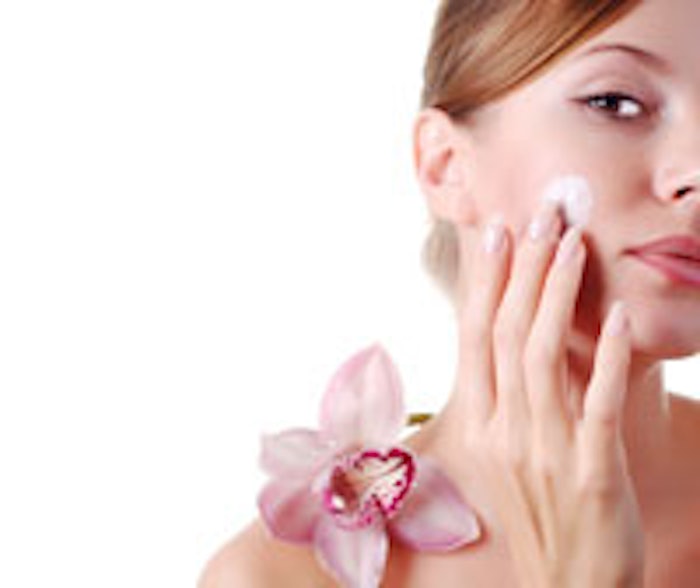
Although it is one of the most common skin conditions, hyperpigmentation can be difficult to treat and often leads to a negative impact on a person’s psychological well being. Characterized by a darkening of the skin due to an increase in melanin (the natural substance that gives skin its color or pigment), hyperpigmentation is commonly treated with topical treatments with varying degrees of success. While hydroquinone has been the gold standard of treatment for hyperpigmentation for decades, some people would rather use a more natural-based product to try to lighten skin affected by dark patches. Now, new topical ingredients—including some that are plant-based—are offering more treatment alternatives showing promise for this tricky skin condition.
American Academy of Dermatology expert
Information is provided by board-certified dermatologist Rebat M. Halder, MD, FAAD, professor and chair in the department of dermatology at Howard University College of Medicine in Washington, D.C.
Why hyperpigmentation occurs
Halder explained that there are three main causes of hyperpigmentation:
- Melasma – A patchy brown discoloration that occurs on sun-exposed areas of the face and is commonly referred to as the “mask of pregnancy” because it often occurs during pregnancy. While melasma can appear in anyone, the condition is more common in dark skin. Women who are pregnant or women taking estrogen supplements or birth control pills are prone to melasma.
- Post-Inflammatory Hyperpigmentation – A condition in which an injury or inflammation to the skin from acne, eczema or psoriasis causes increased pigment production resulting in dark spots. Post-inflammatory hyperpigmentation is most common in people with darker skin tones.
- Sun Damage – Overexposure to the sun is another common cause of hyperpigmentation and is the leading cause of dark spots in light-skinned individuals. Sun exposure also can worsen melasma.
New ingredients expand topical treatment options
Since hyperpigmentation is such a prevalent skin condition and can affect people of all skin tones in varying degress, research is continuously being conducted on new ingredients that can safely and effectively lighten dark spots on the skin. Halder stressed that the mainstay of treatment for hyperpgimentation is year-round sun protection—using a broad-spectrum sunscreen with an SPF of 30 or higher to maximize the benefit of any skin lightening product.
Halder provided details on some of the newer ingredients, including some derived from plants, which are being used in topical treatments for hyperpigmentation in the United States. They include the following:
Soy
- Derived from the soybean plant, it is one of the most commonly used skin lightening ingredients in moisturizers.
- Available in combination products and cosmeceuticals.
- Works by inhibiting the transfer of melanosomes (small “packages” of melanin) into the top layer of the skin, which causes skin darkening.
- Dr. Halder explained that studies have shown its effectiveness as a skin lightening ingredient in cosmeceuticals and its ability to suppress additional pigment from coming to the surface of the skin.
Niacinimide
- A form of vitamin B3 that acts like soy by inhibiting the transfer of melanosomes into the skin’s upper layer.
- Used in many cosmeceuticals for its skin lightening effects and its potential to prevent additional pigment from coming to the surface of the skin.
Ellagic acid
- Natural substance derived from strawberries, cherries and pomegranates.
- Works as an antioxidant and also inhibits an enzyme needed for melanin production.
- Dr. Halder explained that studies show it is more effective at skin lightening than kojic acid or arbutin, which are both discussed below.
Lignin peroxidase
- Enzyme that comes from a fungus and can break down melanin in the skin.
- Lignin is found in wood pulp and when it breaks down, it can lighten the wood pulp. This is how wood pulp is whitened for use in paper and how lignin was discovered as a skin lightening agent.
- Currently available in an over-the-counter product.
- While studies have not been completed, Dr. Halder noted that it does have skin lightening properties.
In addition, studies have shown that these four ingredients pose little or no allergy risk, so they might be more tolerable to consumers who are allergic to other natural lightening agents. If an allergic reaction occurs, Halder explained that consumers should discontinue use and see a board-certified dermatologist for treatment.
The following three ingredients have also shown promise as skin lighteners, but they can cause an allergic reaction in some individuals:
Arbutin
- A natural derivative of hydroquinone derived from plants, including bearberry, blueberry and cranberry.
- Usually available in combination with other skin lightening agents in over-the-counter cosmeceuticals.
- Some cosmetic products available at high-end department stores contain 3% concentrations, which studies show can significantly lighten the skin.
Kojic acid
- An antioxidant derived from a fungus rather than a plant. Works by breaking down melanin in the skin and preventing its production in the skin.
- Found in cosmeceuticals in 1–4% concentrations either combined with other skin lightening agents or by itself.
- Clinical studies show improvement in skin lightening.
Licorice
- There are a number of different licorice extracts derived from licorice root.
- Liquirtin is available over-the-counter and has been shown to lighten skin.
AAD expert advice
“Those affected by hyperpigmentation who would like to use a topical treatment to lighten their skin should consult a board-certified dermatologist who can help separate fact from fiction in terms of product claims," said Halder. "It's important to remember that even topical treatments backed by science do not work overnight, as it takes time and consistent use to product a noticeable improvement. Consumers should aslo be cautious about odering skin-lightening products via the Internet, as the country of origin for the active ingredients might be unknown—raising questions as to the purity or effectiveness of these ingredients, as well as the product's overall quality."










